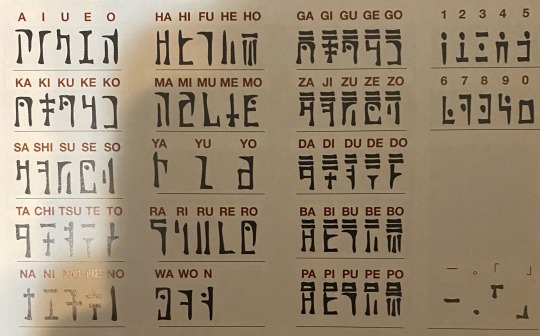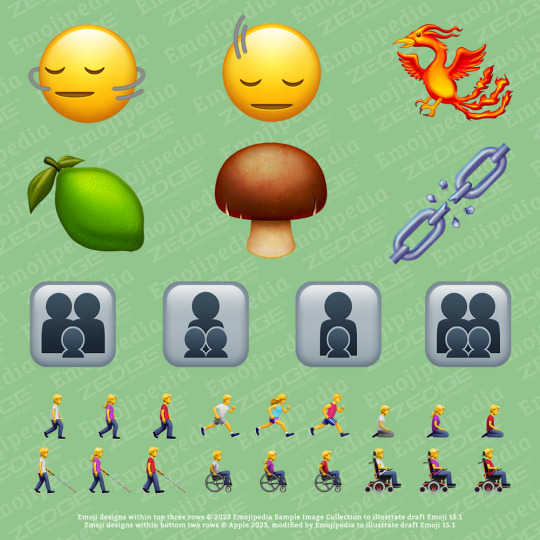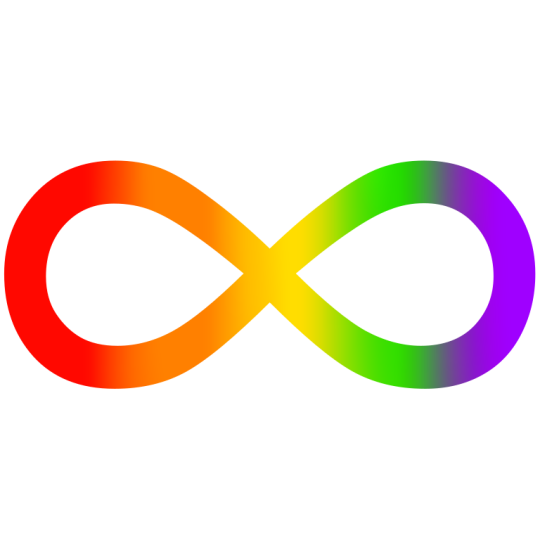#unicode
Text
did you know? ithkuil's writing system is so complicated that if you were to attempt to encode every character as its own thing (as opposed to breaking it down into its components and encoding those) there literally is not enough space in unicode for every character
429 notes
·
View notes
Text
ddidjdjs new fonts to learn HYPED i’m bouncing off the walls
look at wind waker’s!!!!!!

look at twilight princess!!!!

I might have to get off my butt and learn how to make
I might have to get back into learning how to make unicodes cause I think it would be cool to write a fic in one of these
#legend of zelda#loz#wind waker#loz wind waker#twilight princess#loz twilight princess#fonts#unicode#labs dumb crap
260 notes
·
View notes
Text
ALCHEMICAL SYMBOLS | UNICODE
🜀 🜐 🜠 🜰 🝀 🝐 🝠 🝰 🜁 🜑 🜡 🜱 🝁 🝑 🝡 🝱 🜂 🜒 🜢 🜲 🝂 🝒 🝢 🝲 🜃 🜓 🜣 🜳 🝃 🝓 🝣 🝳 🜄 🜔 🜤 🜴 🝄 🝔 🝤 🝴 🜅 🜕 🜥 🜵 🝅 🝕 🝥 🝵 🜆 🜖 🜦 🜶 🝆 🝖 🝦 🝶 🜇 🜗 🜧 🜷 🝇 🝗 🝧 🜈 🜘 🜨 🜸 🝈 🝘 🝨 🜉 🜙 🜩 🜹 🝉 🝙 🝩 🜊 🜚 🜪 🜺 🝊 🝚 🝪 🜋 🜛 🜫 🜻 🝋 🝛 🝫 🝻 🜌 🜜 🜬 🜼 🝌 🝜 🝬 🝼 🜍 🜝 🜭 🜽 🝍 🝝 🝭 🝽 🜎 🜞 🜮 🜾 🝎 🝞 🝮 🝾 🜏 🜟 🜯 🜿 🝏 🝟 🝯 🝿
287 notes
·
View notes
Text
I understand the technical reasons* why it happens but I hate that a lot of times the trans flag emoji shows up as 🏳️ ⚧️.
FIX YOUR UNICODE + EMOJI SUPPORT, EVERYWHERE.
It's often even inconsistent within a single site. Like it'll show up properly in usernames, but then break in page titles.
*Flags are a nightmare in unicode because they can't just encode specific flags or even specific countries, so there's a whole thing where flags are not codepoints, but instead there's a special Flag Alphabet and you make flags by encoding country names (accordin g to ISO 3166-1 Alpha-2, of course) with the Flag Alphabet. So, like, instead of there being a codepoint for the american flag, you just write [Regional Indicator Symbol Letter U][Regional Indicator Symbol Letter S], or "🇺🇸", which should show up as an american flag. It doesn't seem to work here for Reasons.
Anyway, since Trans People aren't a country (YET), they decided to do something different: It's a ZWJ emoji!
Zero Width Joiners are a trick used in a bunch of places in emojispace to do variants. It's a used to glue multiple symbols together to make new emoji without needing to define new code points, with a hopefully sensible fallback. So like, when there's a symbol for, like, "postal worker", you can get a "female postworker" emoji by doing [female emoji][ZWJ][postal worker]" and the rendering engine is supposed to apply a gender-specific variant of the emoji for this.
So to make the trans flag, they used a generic flag 🏳️ [U-1F3F3 WAVING WHITE FLAG] , then an emoji selector (which just says "render this as emoji"), then a ZWJ, then the preexisting trans symbol ⚧️ [U-26A7 MALE WITH STROKE AND MALE AND FEMALE SIGN], then another emoji selector. So it's actually five characters, and your browser is trying very hard to render it as one. or two, depending.
I JUST WANT IT TO WORK. I know why it doesn't, and unicode is hard, but still. I want trans flags everywhere and everyday and in everything I type. my keyboard should have a trans flag button. in fact, why haven't I made that yet? time to order a custom keycap and get to programming.
579 notes
·
View notes
Text
New gesture Emoji in Unicode 15.1: Head Shaking Horizontally and Head Shaking Vertically (aka shake and nod!), and (finally) right facing emoji
Unicode 15.1 will be rolling out to phones and computers across this year. It will include lots of new CJK (Chinese Japanese Korean) ideographs, some new line-breaking rules for syllabic scripts, and a handfull of new emoji! There's a phoenix, a breaking chain, a lime and a brown mushroom, as well as new family silhouettes and a handful of existing emoji, but now facing rightward!
Below are illustrations of the set from a recent Emojipedia summary of the 15.1 update.

The two emoji I'm most excited about are Head Shaking Horizontally and Head Shaking Vertically. That's head shaking and head nodding to you! I wrote these proposals with Jennifer Daniel and the Unicode emoji subcomittee team.
Why the more elaborate names? Well, Unicode tend to describe emoji by form, not function. That's for very good reason, because a head nod might be agreement for you, but in other cultures a vertical movement of the head can mean disagreement. This has provided a double challenge for emoji designers, who have to both show movement and also facial features that aren't too positive or negative. Below are the Emojipedia pair. They've done a great job.

These two emoji are actually made by combining a classic emoji face wtih the horizontal (🙂↔️) or vertical arrows (🙂↕️ ) using a special Unicode character called a Zero Width Joiner (ZWJ, 'zwidge' to it's friends), which means that even though they're two characters they smoosh together to create one emoji. It's the same process that makes all the different flags, as well as the gender and skin tones.
In fact, all of the emoji in 15.1 are combinations using the ZWJ mechanism; including the phoenix (🐦🔥), lime (🍋🟩) and brown mushroom (🍄🟫 ). Those new right-facing emoji are a combination of the usual left-facing emoji and a rightward arrow🚶➡️ .
It's exciting that Unicode have decided to try this set of right-facing characters. Many emoji are left-facing, which is a legacy of their Japanese origins (the word order in Japan means that right-facing makes sense). I've been complaining about emoji directionality since 2015, and I'm glad that this update will mean that lil emoji dude can finally escape a burning building for those of us with a left-to-right writing system and Subject Verb Object word order. They've started with a bunch of people in motion. It will be interesting to see if this set is where it stops or not.


(no no buddy!! To the exit!!)
The use of the ZWJ is an elegant solution because it means that you don't have to make a whole new codepoint for the emoji, it just uses the old one. If someone doesn't have their phone or computer update to 15.1 then it should fall back to just showing 🚶➡️, which somewhat conveys the intent. That's the magic of a good ZWJ combination.
Earlier posts on emoji gesture
Gesture emoji: contributing to the Unicode standard
New Publication: The Past and Future of Hand Emoji
Gender Variations for Person in Suit Levitating Emoji - Emoji Proposal
New draft emoji include 3 proposals I co-wrote!
Emoji as Digital Gestures in Language@Internet [Open Access]
Earlier posts on emoji directionality
Emoji Deixis: When emoji don’t face the way you want them to
Don’t run towards the fire (the on-going problem with emoji directions)
77 notes
·
View notes
Note
what's the derivative of èōƿȤɋʾ˞̿͟χаҞԒԲ֘؇ٹڙ܍ݵߚߺ࣌सধਕਵஃ௨్౭ೝๆາ༗ྊ࿄ၐႲᄚᄺᆡላቭኍዯ፤ᎄᏦᑛᑻᓪᕜᗎᗮᙤᛊᛪᡐᢳᤡᦆ᧴ᩛ᪽ᬢ᭮ᯕ᳜ᴾᶥḚẌựἑὸῢ⁄⃒ℷ↩⇉∸⊮⌕⍻
i
i dont know
hey mathblr can you help me out
137 notes
·
View notes
Text
.·:*¨¨*:·.♡.·:*¨¨*:·.♡.·:*¨¨*:·. ♡ .·:*¨¨*:·.
。 ˚ * some locs ☆⠀。 made by me ♱⠀
☆ . °ִ ۫ ⁎ 𓊆 🐾 𓊇 † ✺
+ ˚ * 2001 ✭ 🗝。 ˚ ˖༺ ۫
˚。⋆ : +。゚💭 ♩ 00'
.·:*¨¨*:·.♡.·:*¨¨*:·.♡.·:*¨¨*:·. ♡ .·:*¨¨*:·.
#。゚(。ノωヽ。)゚。 。 ˚ * °ִ ۫。 🐾 💧#symbols#aesthetic#coquette#locs#bios#kpop locs#kpop bios#kaomojis#coquette bios#unicode#coquette moodboard#kpop#lq#gg icons#soft bios#soft locs#messy locs#messy bios
844 notes
·
View notes
Text
mahjong tile unicode characters discovered. day ruined. not even colbie callait and benadryl can save the night anymore
🀤
31 notes
·
View notes
Text
There sure are some weird, non-emoji Unicode characters.
Like, who tf needs 🂇
Or 🃎
Like, why are these a priority out of all the potential characters?
64 notes
·
View notes
Text






#my emojis#custom emoji#custom emote#discord emoji#discord emotes#emoji#emote#autism#infinity#autistic#autistic symbol#autism icon#autistic icon#emotes#unicode#unicode edit#actually autistic#discord emote#discord emojis#custom emojis#custom discord emote#custom emotes#not twemoji#autistic pride#the tism
33 notes
·
View notes
Text
imagine a 21-round poll tournament for every unicode codepoint. not just the ones that are assigned, the whole thing. all 2^21 of them.
461 notes
·
View notes
Text
。っ ̫-。₎ ヾ(`ヘ´)ノ (っˆ ³(ˊ ᵕ ˋก ) ૮₍ ˃ ³ ˂ ₎ა
(。>﹏<。) ( ੭ ˙ᗜ˙ )੭ (0>᎑< ★) (>᎑<๑)
₍ᐢ. ̫.ᐢ₎ ૮(ˊ ᵔ ˋ)ა (๑ᵔ⌔ᵔ๑) ₍ᐢ˶• ˔ กᐢ₎
꒰⑅ᵕ༚ᵕ꒱˖♡ (/^-^(^ ^*)/ (-_-メ) (ノ`⌒´)ノ
(。ノω\。) (;ŏ﹏ŏ). ゚(^O^)↝ \(๑╹◡╹๑)ノ
#unicode#messy symbols#aesthetic symbols#soft symbols#symbolist art#symbols#bios dark#soft bios#kpop bios#anime bios#cute bios#carrd bios#bts soft bios#like or reblog#gg bios#bg bios#bp bios#kpop layouts#messy bios#messy soft#jimin messy bios
774 notes
·
View notes
Text
RIP to all of the unicode symbols that were permanently replaced by emojis. ♥
28 notes
·
View notes
Text
aesthetic text symbols for your posts!

ʬʬ ⪩⪨ ⟡ ᐢ..ᐢ ◖ ⇅ ○ ✿ ⊹ ∇ ✸ ⟢ ❀ ᵔᴗᵔ ♡ 〇 ıllı ᶻz ⊂⊃ ␥ ⿸ ꔠ ✶ ◍ ▿ ⤸ ⬚ ៶៸ △ → () ▥ ▤ ▦ ▧ ▨ ▩ ░ ▒ ▓ ⿴ ◫ ▣ ≧≦ ㄑ ⎙ ➜ ★ ⨳ ✸﹕☆ ◐ ◉ ◖◗ ▽ ‹𝟹 ﹫ ☓﹕ᵔᴗᵔ ⺌ ◎ ᶻ﹕→ .(>。☆)﹔⇆ ꜛ ❥ ? ! ﹏ ✦ >< ◌ ✧ 𖥔 % ﹙﹚ ◜◡◝ ꜝꜝ ☓ ⬦ ◈ ⬙ ⇆ ﹢ ᶻ ✹ ✶﹑〇﹐罒﹢♡ ⇆﹑⬚﹐ᶻ ❀﹐✶ ▹ ✩ ▨﹐◌﹐❀ ✿﹢﹐░ ᶻz﹐☆ ⊂⊃﹑ⵌ ◂ ❰❰ ⩇ ⊞﹐ʬʬ ♢﹐ᐢ..ᐢ﹐✩ ✷ ✕﹐〇﹐✿ Ꜣ ˃̵ᴗ˂̵ ♡﹐≋ ᐢᗜᐢ ⇵ ⪨﹕↺﹐✿ ✶﹐≋ ⇆﹐ʬʬ ﹗﹐➜ ⬦﹕ᶻz ▢ ⭔ ☰﹐◖◗ ꕀ﹑ᵔᴗᵔ ᗢ ✿﹐⊂⊃ ꕀ﹐リ﹐口﹐ꕀ (`δ´) 口,✿﹐⊂⊃ 𖦹﹐゛✿﹑(`δ´) イ。ꕀ﹑リ﹐⊂⊃ 口﹐・ᴗ・ ░﹑リ ◐﹐、﹕✧ ✶﹔?﹐ʬʬ ⺡ ░﹑⬦ ૪ 〹 罒 ◎﹐ꕀ 〣 ⿸﹑ꔠ ⿻ ☆ ıllı﹢☆ ❀﹕▧ ★﹕ıllı ◎﹐☆ ꕀ﹐➜ ⪩ 〇﹐➜ ★﹕◐ %﹕▧ ꕀ ₊ˎ✧ ˃ᴗ˂﹕˃ᗜ˂﹕⿴ ☆﹔⿴ ⭔﹕⪩⪨﹢◒ ⊂⊃﹔♡ ⟡﹕➜﹐▦﹐✦ ✶﹐﹢ ㄑ﹕ꕀ ><﹐ꔠ﹐✿﹐×﹐丶﹐>︿ リ﹕﹢﹐﹔★ ⨯ ◞ ◟◝ ◜ ﹪ →﹐ıllı ⌕ ⌗ ❍ ⭓ ◒ ₊ % ⫘ ⌕﹕★ ⌗﹐﹪﹐⌯﹐﹟﹐◐ ↺ ♡﹕❀﹑⿸﹕▞ ╰ ░﹐◎ ◜ᴗ◝ ˃ᴗ˂ ♡﹐﹅ ⊞ ⊞﹕▞ ✿﹐♡﹐❀ ▨﹕◍ ˃̵ᴗ˂̵﹑♡ @ ˘ᗜ˘ ⪩﹐ᶻz ⪩﹔◖﹐❀﹕⿸﹔﹢﹑ᐢᗜᐢ ⊂⊃﹑✿ イ﹐ꕀ ▦﹐⊂⊃ ❀﹕➜ ⪨ ✶﹑✹ ⪩。ꕀ リ ☓﹐⊂⊃ ・ᴗ・ ☆﹔リ ✶﹑ꕀ リ﹐⇆ ✿﹔➜﹐﹏﹐★☆ ┆︎ ✿﹔✸﹕♡﹐◌ ❥﹐%﹑〹.ʬʬ﹕੭﹐♢ 口 ⇣⇡ ☆﹔⌗ ⪩﹐ᶻ ⪩﹔◖﹐❀﹕⿸﹑ᐢᗜᐢ リ﹐ꔠ﹐✿﹑∇ ✶﹑ ⩇﹕✿ ʬʬ﹕口﹐〇 ⪩﹐ꕀ ⿸﹑␥ ♡﹕リ ⊞﹕❀﹑◌ ✸﹕⌗﹕★ ★☆ ıllı﹢☆﹕❀ ★﹕ıllı﹐▒ ꕀ﹔➜ %﹐⊂⊃ ˃̵ᴗ˂̵﹕˃ᗜ˂ ⭔﹕⪩⪨﹐﹢﹐◒ ⟡﹕➜﹐▦ ✶﹐ㄑ﹕ꕀ ><﹐ꔠ﹑ꕤ ︴ ⭔﹐𓆩♡𓆪 Ꮺ キ ꗃ ⿶ ⌓ ⧅ ◆ ⌇ ✿﹑⟡ ➔ ᗜ﹔ ✮ ^..^ ✵ .ᐟ ꉂ (˃̵ᗜ˂̵ )
66 notes
·
View notes
Text
why havent i seen anyone here talking about the latest emoji candidates

36 notes
·
View notes
Text
While it is true Latin-based orthographies predominate in writing African languages, those scripts that originated in Africa are a matter of special pride that Latin-based or Arabic-based scripts do not [carry].
The N’Ko script, for example, was devised by Solomana Kante in 1949. It is used for the Mande group of languages in West Africa, has spread beyond Guinea and Ivory Coast into the surrounding countries of Mali, Senegal, Liberia, Burkina Faso, and Sierra Leone (Tuchscherer 2007 and Doumbouya, p.c.). Many publications, including newspapers and books[,] have been published in N’Ko, and continue to [be published]. An expatriate in Philadelphia has driven the effort to get N’Ko into Unicode and, more recently, to get rendering engine support for N’Ko.
It is possible that other non-Latin scripts might also become more widely used, like N’Ko has done. The Bamum script in Cameroon, for example, is currently deemed an “endangered” script: there is only one user for whom it is the only means of writing, though the script appears in art and signs. Still, the script represents a powerful symbol of the Bamum cultural achievement – the creation of an original script[ –] though it is true few people actually can read it. Nevertheless, it is undergoing a revival effort (with support from Bamum Scripts and Archives Project), with teaching of the script continuing. It is hoped the script’s use may become more widespread. This may be the case for other non-Latin (/Arabic) scripts as well.
[...] Five “new” African scripts have appeared over the past 9 years. Unicode 3.0 had Ethiopic (with additional extensions in 4.1), 4.0 had Osmanya, 4.1 had Tifinagh, 5.0 had N’Ko and 5.1 included Vai. A quick survey finds Unicode fonts available for all of these, though Vai is still only included in a few fonts (James Kass’ Code2000 and one by Jason Glavy). However, font availability does not give the full picture of the situation for level of support for these scripts.
[...] Of all the five newly approved African scripts, only N’Ko is right-to-left, and this has been the source of problems. This is particularly unfortunate, given that “the production of published literature in N’Ko probably exceeds the published literature in all the other West African scripts combined” (Tuchscherer 2007). N’Ko has suffered because it is not currently supported in Vista’s Uniscribe rendering engine, and Windows is the predominant platform used by the N’Ko community. An alternative to Uniscribe, SIL’s Graphite rendering engine, has been used in the meantime. Unfortunately, there have been several difficulties in getting Graphite to handle right-to-left correctly, but most problems have finally been rectified. Now I am told that the latest version of OpenOffice using Graphite still has poor letter and accent alignment for N’Ko; a new version of Graphite in OpenOffice, currently being beta-tested, will hopefully solve the outstanding issues.
[...] The case of N’Ko is emblematic of some problems faced by minority groups, who don’t have the economic or business pull to get software support for their script. Still, I hope that in the near future N’Ko will finally be included in Uniscribe.
Shigeaki KODAMA, a researcher at Nagaoka University of Technology in Japan (working with the Language Observatory Project), surveyed 48 country code top-level domains, and discovered that webpages containing only African languages numbered only 2.3% of the total webpages in 2006, and in a smaller sampling in 2007, only 1.2%. (KODAMA forthcoming). While the African languages are scarce in webpages, the colonial languages, such as English and French, predominate: they make up about 70 – 77% of the webpages in Africa.
According to a paper by a RIFAL study on African webpages published in 20036, African languages are found on the Web more as topics of study than as the means of communication; English predominates – even in Francophone areas [–] as the language of communication; African language courses are rare on the Web (Fantognan 2005).
Though the World Summit on Information Society’s “Plan of Action” document, created in Geneva in 2003, repeated the need to
develop local content, particularly in indigenous languages, it is clear that the development of local content on the Web in African languages is still in its infancy. The goal of preserving the world’s cultural and linguistic diversity on the Web and elsewhere has still a long way to go.
Deborah Anderson, "Report to JTC 1 Chair and JTC 1/SC 2 Chair Regarding Resolution 34 on African Languages," 2009. Unicode document L2/09-285.
39 notes
·
View notes